INSPIRATION
Are Diamond Earrings A Good Investment?
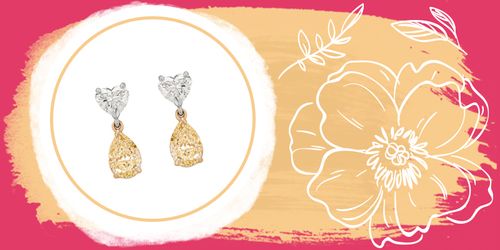

Are Diamond Earrings A Good Investment?
For centuries, diamonds have been cherished not just for their brilliance but also for their potential value. Among them, diamond earrings stand out as both a statement of elegance and a financial asset. But how viable are they as an investment?
This article offers a deep dive into the world of diamond earrings, exploring their history, the factors that determine their value, and the broader implications of investing in them.
Whether you're a seasoned investor, a jewellery enthusiast, or simply curious, we invite you to discover the multifaceted realm of diamond earrings as a unique investment avenue.

A Brief History Of Diamond Earrings
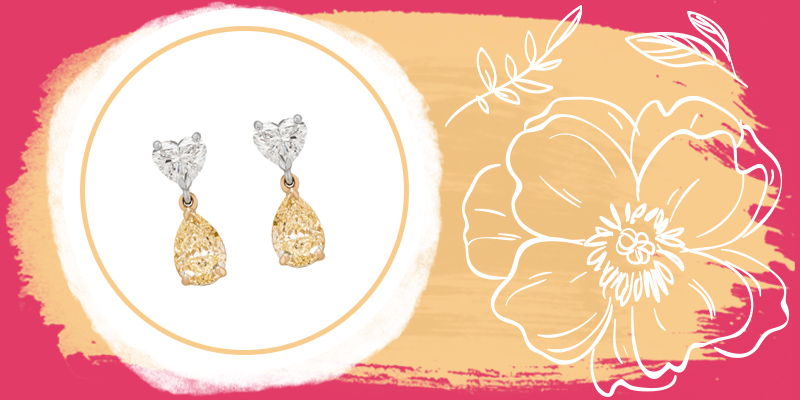
Tracing back millennia, diamond earrings have a rich and storied history. Their origin is rooted in ancient India, where diamonds were first mined and treasured. As symbols of wealth and status, diamonds soon became coveted across various civilisations. Over time, their significance grew, not just as spiritual talismans, but also as markers of power and prestige, especially among royalty.
As trade routes expanded, the allure of diamonds spread from the East to Europe. Renaissance Europe witnessed an upsurge in the use of diamonds in jewellery. The design of earrings evolved from simple set stones to intricate art pieces reflecting the fashion and cultural nuances of different eras. As techniques improved, so did the ability to create more dazzling and elaborate designs, solidifying diamond earrings' place in the pantheon of luxury adornments.
Some of the earliest diamond earrings were more than just decorative; they were emblematic of one's position in society. Historical records and artworks, for instance, depict Queen Elizabeth I donning pearl and diamond earrings, underlining her regal status.
In ancient Mughal courts too, earrings studded with diamonds and other gemstones were not just ornaments but also signifiers of royalty and nobility. These iconic pieces serve as reminders of the timeless charm and significance of diamond earrings throughout history.

Understanding The Value Of Diamonds
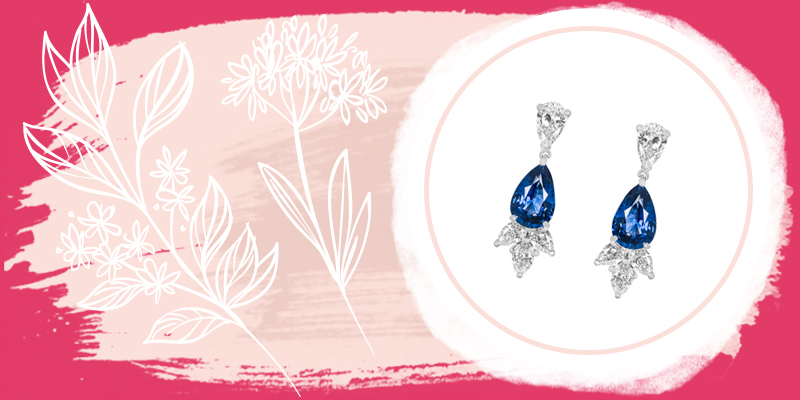
The valuation of diamonds is a nuanced process that combines both art and science. It requires expertise, keen observation, and an understanding of the various factors that contribute to a diamond's worth. Central to this valuation process is the universally recognised 4 C's: Cut, Colour, Clarity, and Carat. Each of these aspects plays a pivotal role in determining a diamond's value.
Cut
The cut of a diamond is perhaps its most defining feature. It's not just about the diamond's shape, but more about how well it has been sculpted and polished from its original form. A masterful cut optimises the diamond's ability to reflect light, resulting in its signature sparkle.
The brilliance, fire, and scintillation a diamond emits are directly proportional to the precision of its cut. An ideally cut diamond will have symmetrical facets that capture and reflect light perfectly, maximising its beauty.
Colour
Diamond colour refers to the presence or absence of any hue in the stone. A grading scale, ranging from D (colourless) to Z (light yellow or brown), is used to classify diamonds based on their colour. Completely colourless diamonds, categorised as D, are rare and often command higher prices. As you move down the scale, slight tints become more visible, especially to the trained eye, and can influence the diamond's value. However, certain coloured diamonds, called "fancies," such as blues, reds, and greens, can be exceptionally valuable due to their rarity.
Clarity
Clarity assesses a diamond's internal and external imperfections, known respectively as inclusions and blemishes. The fewer these imperfections, the higher the clarity grade and, consequently, the diamond's value. Clarity grades range from Flawless (no inclusions or blemishes visible under 10x magnification) to Included (inclusions and/or blemishes visible to the naked eye). Although many imperfections are microscopic and don't affect the diamond's beauty, their presence can impact its overall valuation.
Carat
Carat refers to the weight of the diamond, with one carat equaling 0.2 grams. It's a common misconception that carat size directly relates to the size of a diamond. While there's a correlation, density and cut can also influence how large a diamond appears.
Generally, as the carat weight of a diamond increases, so does its value. However, two diamonds of the same carat weight can differ significantly in value depending on their cut, colour, and clarity.

Economic Factors Affecting Diamond Prices
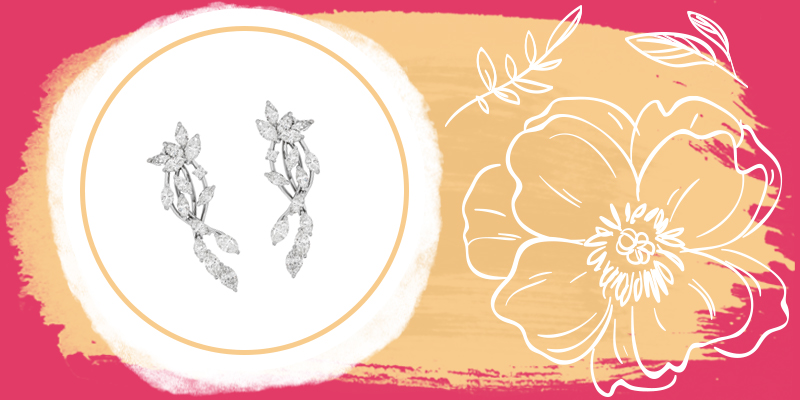
Diamonds, while being timeless jewels, are not immune to the ebb and flow of the global economy. Various economic factors can significantly influence diamond prices, making them a dynamic investment.
Impact Of Global Economic Trends On Diamond Prices
At the macro level, diamonds, like many luxury goods, are influenced by global economic health. During periods of economic prosperity, disposable incomes rise, leading to increased consumer spending on luxury items such as diamonds. Conversely, during economic downturns, discretionary spending typically decreases, which can result in softened demand and potentially lower diamond prices. For instance, global financial crises or recessions can lead to a drop in diamond sales, as seen during the 2008 financial crisis. However, as economies recover, so do the demand and the prices of diamonds, reflecting their resilient appeal.
Role Of Diamond Mines And Their Geopolitical Implications
The supply side of the diamond market equation lies largely in the hands of diamond mines. A majority of the world's diamonds come from a handful of major mines located in countries like Russia, Botswana, Canada, and Australia. These mines are often controlled by a few dominant corporations, which can influence the supply and, by extension, the price of diamonds.
Geopolitical factors also come into play. Any political instability or regulatory changes in key diamond-producing nations can impact mining operations, affecting global supply. As well as this, new mine discoveries or closures of existing mines can lead to significant fluctuations in diamond availability. For example, the closure of a major mine due to depleted resources or environmental concerns can tighten supply, potentially driving up prices.
Influence Of Major Diamond Trading Hubs And Their Economic Stability
Once mined, diamonds don't immediately find their way to the consumer. They pass through various hands in the diamond value chain, a significant part of which operates in major diamond trading hubs like Antwerp, Dubai, Mumbai, and Hong Kong. These hubs serve as epicentres for diamond trading, cutting, and polishing.
The economic health and stability of these trading hubs play a vital role in determining diamond prices. Economic factors, such as currency fluctuations or trade regulations in these regions, can influence the cost of trading and, in turn, the final diamond prices. Furthermore, the presence of diamond bourses (dedicated diamond trading exchanges) in these hubs also ensures that diamonds are traded efficiently and transparently, adding another layer of pricing standardisation.
To illustrate, if a major trading hub like Antwerp were to face economic challenges or strict regulatory changes, it could disrupt the flow of diamonds, impacting prices not just in Europe but globally, given the interconnected nature of the diamond industry.

Ethical Considerations

The diamond industry, while shimmering on the surface, has its dark facets, most notably the issue of "blood diamonds" or conflict diamonds. These diamonds originate from war-torn regions and are sold to finance armed conflicts against governments. Their extraction often involves severe human rights abuses, including forced labour, child labour, and even violence.
Recognising the dire implications of trading in such diamonds has led to heightened demand for ethically sourced diamonds. Ethically sourced diamonds are procured following strict standards that prioritise environmental sustainability and fair labour practices, ensuring that their journey from mine to market doesn't involve any form of exploitation.
Furthermore, certifications and ethical standards have become paramount in the diamond industry. Certifying bodies play a pivotal role in combating the flow of conflict diamonds. This certification ensures that diamonds are sourced from conflict-free zones, bringing transparency to the diamond trade. Purchasing certified diamonds not only assures consumers of the stone's quality but also its ethical sourcing.

Diamond Trends and Popularity
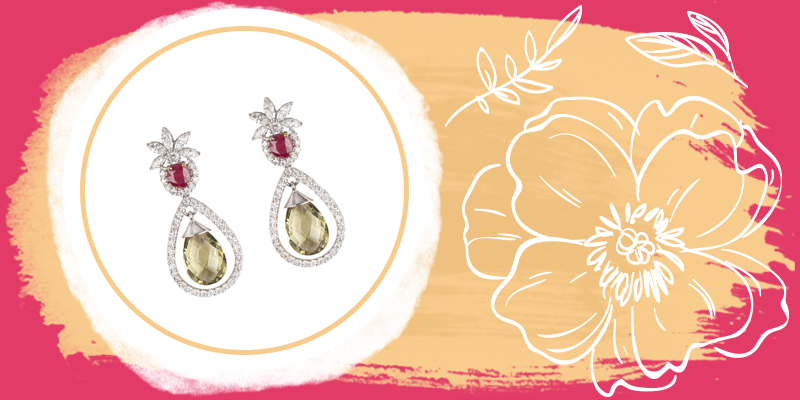
Fashion and cultural trends have long shaped the allure and demand for diamond earrings. The zeitgeist of any era, reflected through its fashion, music, or cinema, often directly correlates with the styles and preferences in diamond jewellery. For instance, the minimalist trend in recent fashion has seen a surge in demand for solitaire diamond earrings, emphasising elegance through simplicity. Conversely, when opulence trends, chandeliers or drop earrings studded with diamonds might see heightened popularity.
Celebrities and public figures play a pivotal role in dictating these trends. A diamond piece worn by an iconic personality at a red carpet-event can set off global demand. Elizabeth Taylor's love affair with diamonds is legendary, and her choices have influenced generations. More recently, the Duchess of Cambridge's diamond earrings, a legacy from Princess Diana, have been the talk of the town, reaffirming the timeless charm of diamonds. When celebrities opt for unique cuts or rare diamonds, it creates a ripple effect, elevating those particular styles or stones to trendsetter status.
Thus, the intricate dance between fashion, cultural shifts, and celebrity influences continually reshapes the desirability and, consequently, the value of diamond earrings in the ever-evolving luxury market.

Investment Potential Of Diamond Earrings
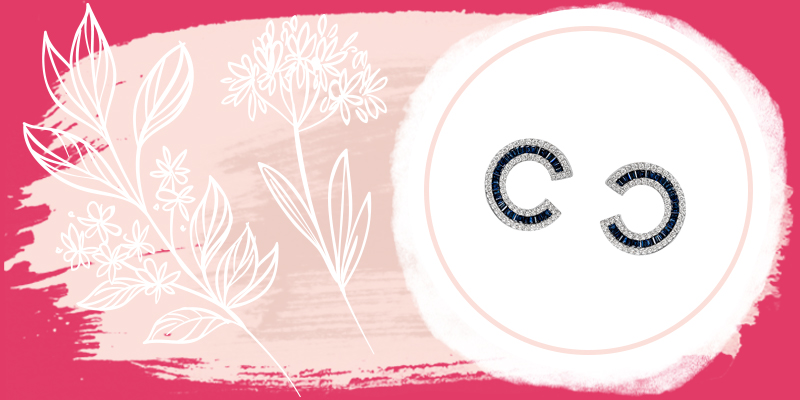
Diamond earrings, beyond their dazzling beauty, have been considered as potential investment avenues for centuries. However, like any investment, they come with their own set of advantages and disadvantages.
Potential Advantages Of Investing In Diamond Earrings
Uniqueness And Wearability
Diamonds, particularly high-quality ones, possess an inherent uniqueness. No two diamonds are exactly alike, which means each piece of jewellery holds a distinct value. Furthermore, unlike many other investments, diamond earrings can be worn and flaunted. Investors get dual benefits: the appreciation in the value of their investment over time and the pleasure of wearing their assets.
Long-Term Profitability
Historically, diamonds have exhibited an upward price trend in the long run. As they are a finite resource, the rarity of diamonds, especially high-quality ones, is expected to increase, making them a potentially appreciable asset over extended periods.
Increasing Demand Due To Decreasing Supply
As diamond mines age, the cost of extraction increases, and fewer new significant discoveries are being made. This tightening supply, coupled with the rising demand, especially from burgeoning markets like China and India, potentially bolsters the price of diamonds, enhancing their investment appeal.
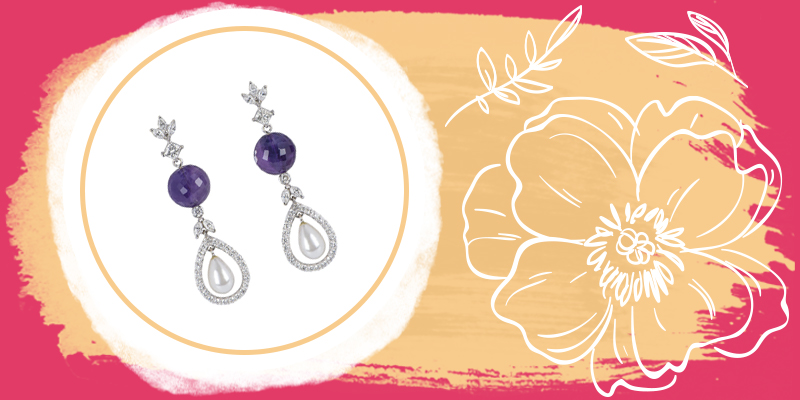
Potential Disadvantages Of Investing In Diamond Earrings
Risks Of Investment Depreciation
One significant factor looming over the diamond industry is the rise of lab-grown diamonds. With technological advancements, these lab-grown counterparts are becoming indistinguishable from natural diamonds to the untrained eye. As they can be produced more sustainably and ethically, they're gaining popularity, especially among the younger generation. This surge could impact the demand and price of natural diamonds.
Falling Diamond Prices
While diamonds have seen a generally upward trend over the decades, there have been periods of price declines. External factors, like economic recessions or shifts in consumer preferences, can influence demand and subsequently affect prices.
Impact Of Higher Interest Rates
Rising interest rates can influence the diamond market in a couple of ways. First, higher interest rates mean higher borrowing costs, which can deter investors from purchasing luxury items, including diamonds, on credit. Second, as interest rates rise, alternative investments that yield interest become more attractive, potentially diverting funds away from tangible assets like diamonds.
Shop Diamond Earrings
Insurance and Security
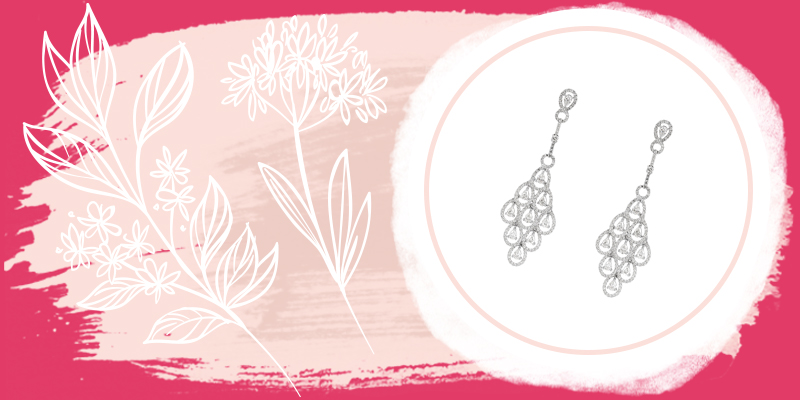
Investing in diamond earrings isn't just about purchasing them; it's also about ensuring their safety and protection for the long term. Given the substantial financial and emotional value associated with such pieces, securing them becomes paramount. Here's a dive into the critical considerations of insurance and security for diamond jewellery:
Importance of Getting Diamond Jewellery Insured
Insurance isn't just a safety net; it's a peace of mind. Diamond earrings, given their value, can be prone to theft, damage, or loss. While the sentimental value may never be fully recovered, having an insurance policy ensures that the financial investment is protected. Comprehensive jewellery insurance covers not just theft but also accidental damage or loss, providing compensation or covering the cost of repair or replacement. When insuring, it's essential to have the jewellery appraised by a reputable jeweller to ensure it's adequately valued and insured for its full worth.
Ensuring The Security Of Your Diamond Investments
Beyond insurance, proactive measures should be taken to safeguard diamond earrings:
Safe Storage: When not being worn, diamonds should be stored in a secure location, such as a home safe or a bank deposit box. Ideally, individual pouches or boxes should be used to avoid scratches or damages from other jewellery pieces.
Regular Maintenance: Periodic checks and maintenance by professional jewellers can ensure the earrings remain in pristine condition and that any loose settings or potential damages are identified early.
Travel Considerations: When travelling with your luxury jewellery, always keep diamond jewellery in carry-on luggage and avoid displaying expensive pieces in unfamiliar or potentially unsafe environments.

Pre-Owned Luxury Jewellery
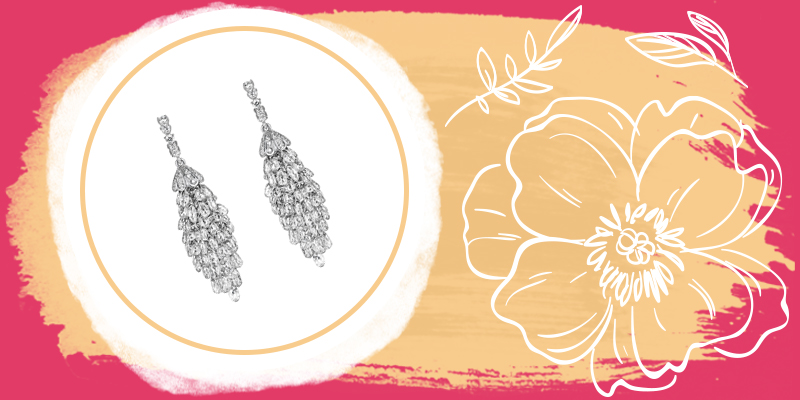
The allure of luxury jewellery extends beyond brand-new creations. Vintage or pre-owned pieces, enriched with history and unique charm, have found their niche, attracting both investors and connoisseurs. One compelling advantage of this market is the opportunity to discover rare or discontinued items, treasures absent from modern collections that can serve as both a source of personal pleasure and a valuable asset.
Furthermore, the pre-owned market boasts an expansive array of choices, encompassing various eras, styles, and designs, ensuring that every buyer finds something that resonates with their taste. Embracing pre-owned jewellery is also an ode to sustainability. It promotes the recycling of existing gems, mitigating the need for new mining and its environmental consequences. Every piece, steeped in history, adds a layer of depth and narrative to a collection. However, with such vastness in the market, it's crucial to prioritise authenticity.
Here at Rich Diamonds we ensure not only the genuine quality of the jewellery but also provides indispensable documentation, reaffirming the legitimacy of one's investment.

FAQs
Q: Do diamond earrings have resale value?
A: Yes, diamond earrings retain a resale value, especially if they are high in quality and well-maintained. However, resale prices can vary based on factors such as retail markups and market dynamics.
Q: Do diamond earrings lose value?
A: Diamonds can depreciate after purchase due to retail markups. However, over time, high-quality diamonds have shown a tendency to maintain their value or appreciate in value, which is dictated by rarity, demand, and global market conditions.
Q: Do diamonds increase in value over the years?
A: Generally, high-quality diamonds have shown a tendency to appreciate over extended periods, especially with decreasing supply. However, short-term fluctuations are common based on market dynamics.
Q: Are diamonds worth more now than ten years ago?
A: On average, diamonds have seen an appreciation in value over the past decade, primarily due to increased global demand and reduced mining yields. However, specific values vary based on quality and market conditions.
Q: Which diamond cut holds its value?
A: The Round Brilliant cut, due to its timeless appeal and optimal light reflection, tends to hold its value better than other cuts. Although, rarity can also impact the value retention of other cuts.
Q: How much are diamond earrings worth?
A: The worth of diamond earrings varies based on the 4 C's: Cut, Colour, Clarity, and Carat, along with the design, brand, and market demand. It's best to get an appraisal for an accurate valuation.

